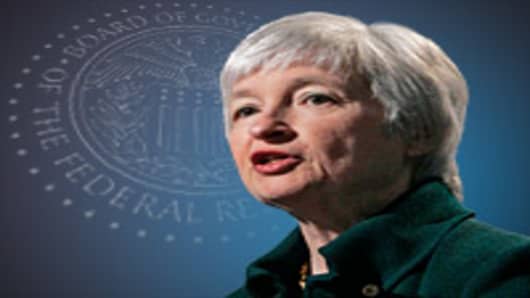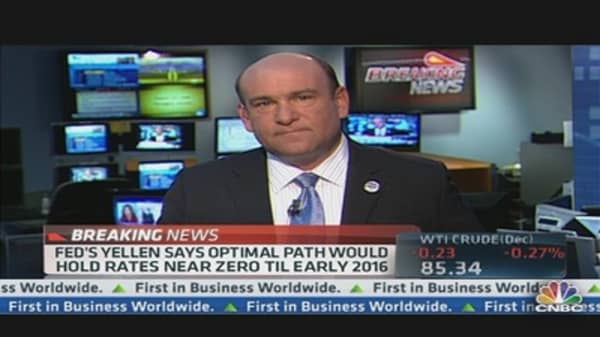The Federal Reserve could keep interest rates exceptionally low through early 2016 if it followed a so-called optimal policy path, according to a senior Fed official.
Fed Vice Chair Janet Yellen in a speech Tuesday described the optimal path as one that keeps inflation closest to Fed's 2% target and the unemployment rate closest to 6%. "This highly accommodative policy path generates a faster reduction in unemployment … while inflation slightly overshoots the Committee's two percent objective for several years."
The early 2016 date is later than the Fed's current forecast, in which it says it expects rates to remain "exceptionally low" through mid-2015.
But such calendar date guidance could soon be eliminated, Yellen suggested. She said the Fed is considering scrapping calendar date guidance in exchange for economic targets such as inflation and unemployment.
Yellen, who heads a special committee inside the Fed considering communications strategy, said she "strongly supports" proposals to "eliminate the calendar date entirely and replace it with guidance on the economic conditions that would need to prevail before liftoff of the federal funds rate…" Such proposals have been made by Chicago Fed Presidents Charles Evans and Minneapolis Fed President Narayana Kocherlakota.
"I support this approach because it would enable the public to immediately adjust its expectations concerning the timing of liftoff in response to new information affecting the economic outlook. This market response would serve as a kind of automatic stabilizer for the economy,'' Yellen said.
The calendar date guidance has been criticized specifically because it is disconnected from economic conditions and requires the Fed to revisit the date as it draws near. (Read more: "Central Banks Can't Inflate Market Prices Forever: El-Erian".)
Failing to lengthen guidance is seen as a tightening of monetary policy since it shortens the window in which the Fed is forecasting rates will be low.
The forecast and communication in general are seen as important elements of monetary policy at a time when the Fed has already lowered the short-term interest rate it controls to zero.
Since it can't lower rates any more, the Fed has instead tried to stimulate the economy with what is now open-ended asset purchases of long-term securities designed to bring down interest rates and communicating how long it plans to keep rates low. (Read more: "Fed Pulls Trigger, to Buy Mortgages in Effort to Lower Rates".)
Evans has suggested that the Fed forecast low rates as along as unemployment remains above seven percent and inflation below three percent. Kocherlakota advocates 5.25 percent on unemployment and 2.25 percent on inflation.
Yellen also emphasized the existing Fed policy sees the official two percent inflation target as an average to be achieved over time, not a ceiling. She said that could mean, in practice, higher inflation rates for a time while it pursues lower unemployment.
-By CNBC's Steve Liesman
@steveliesman





